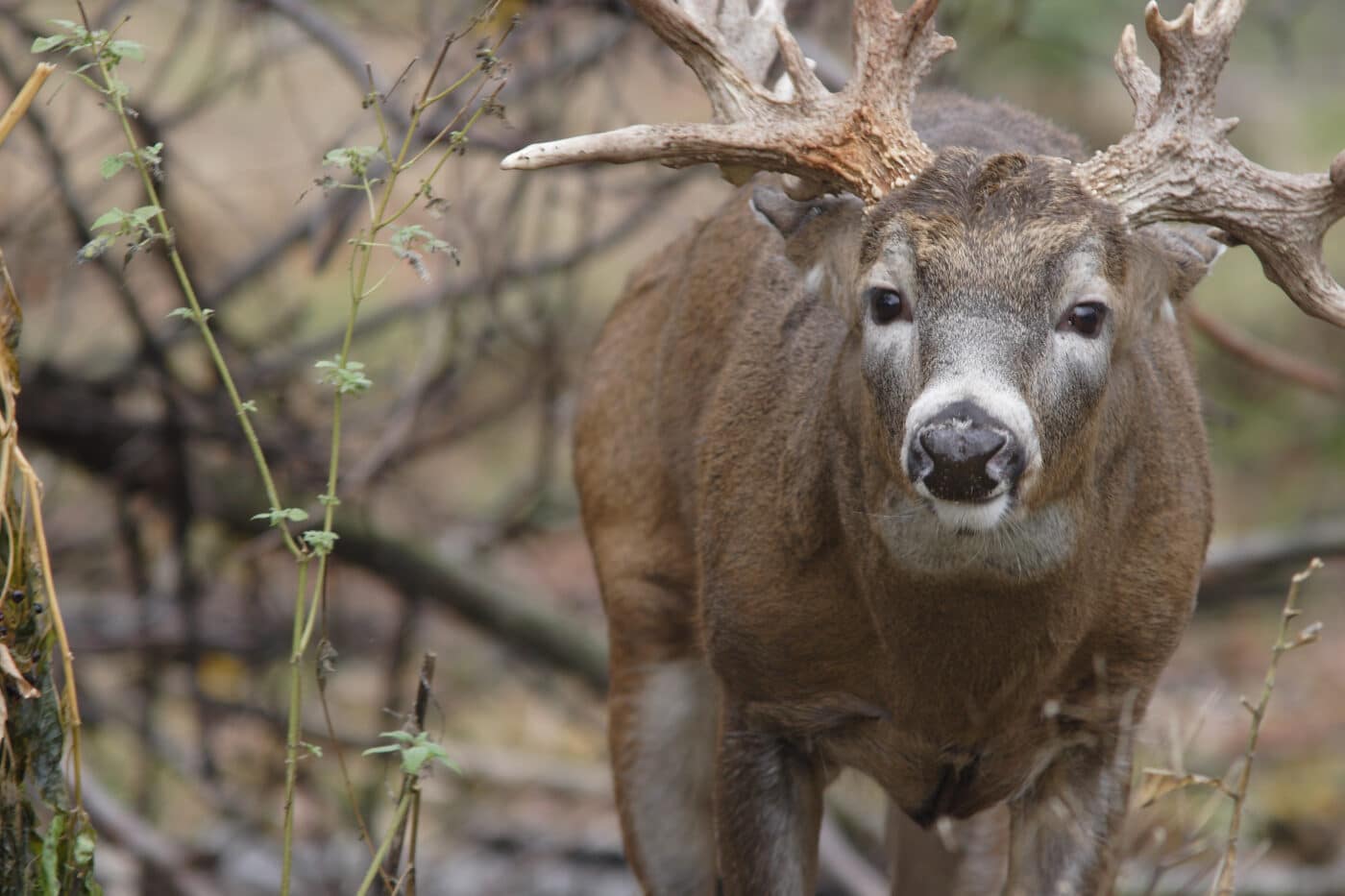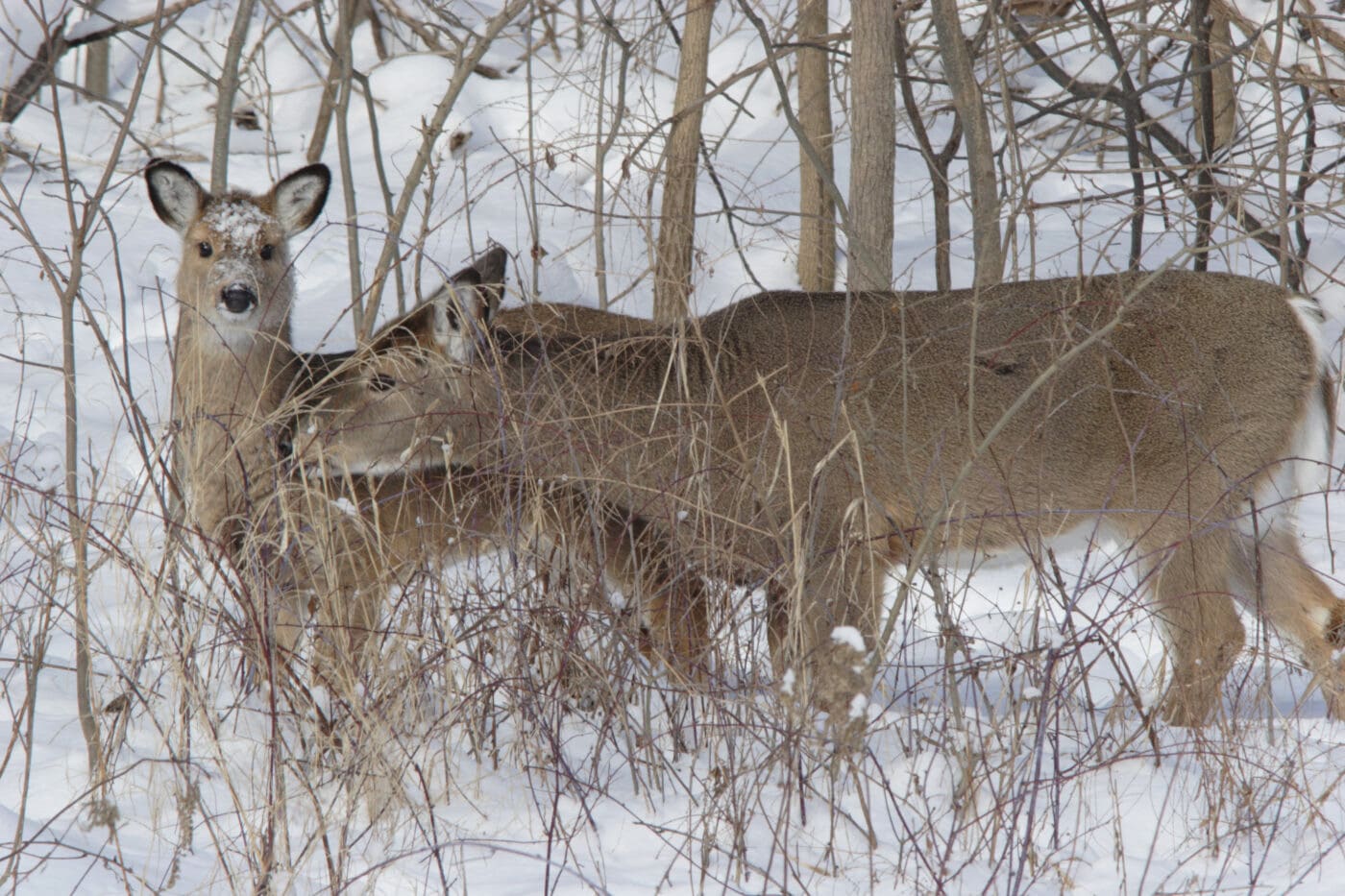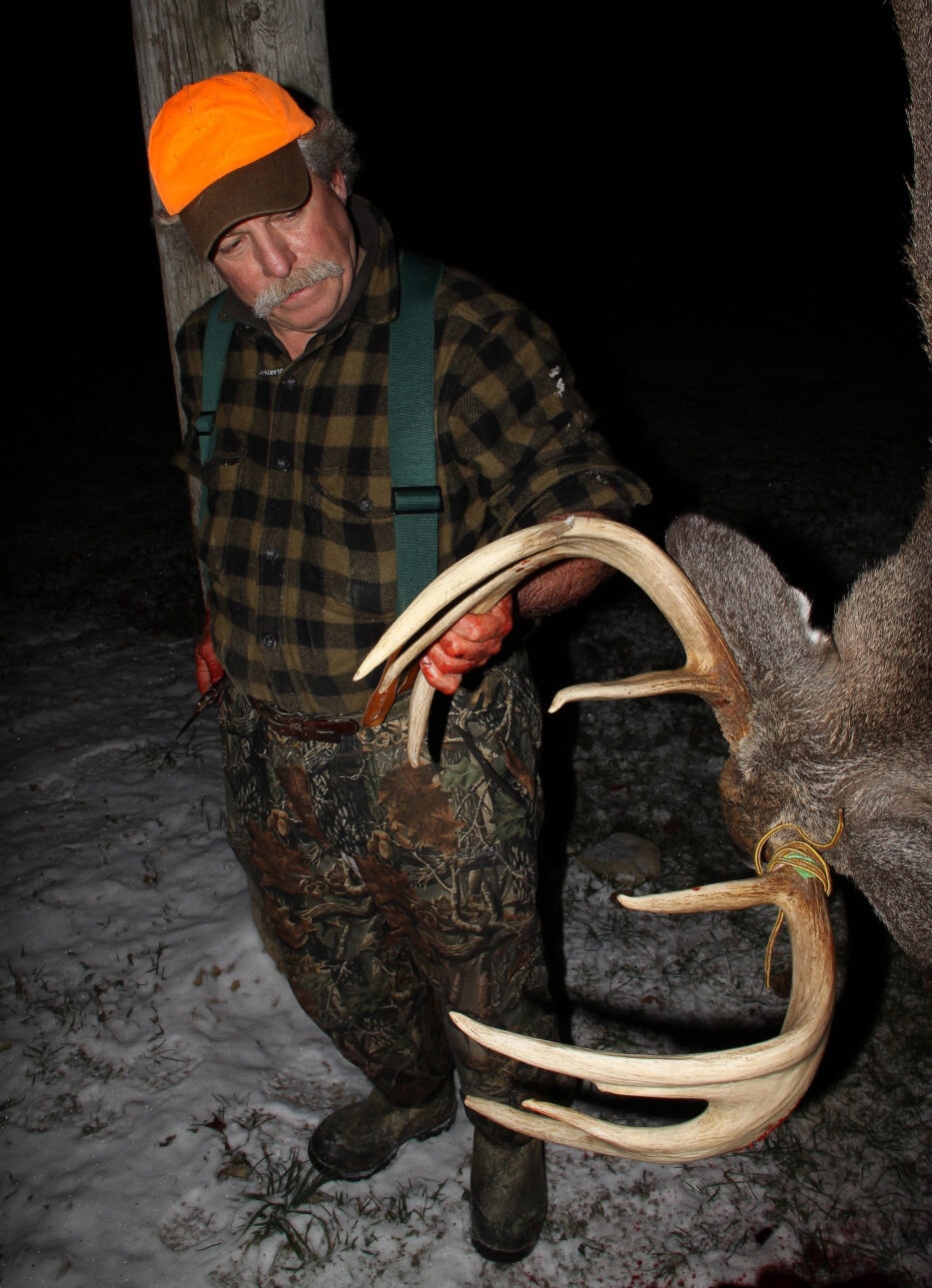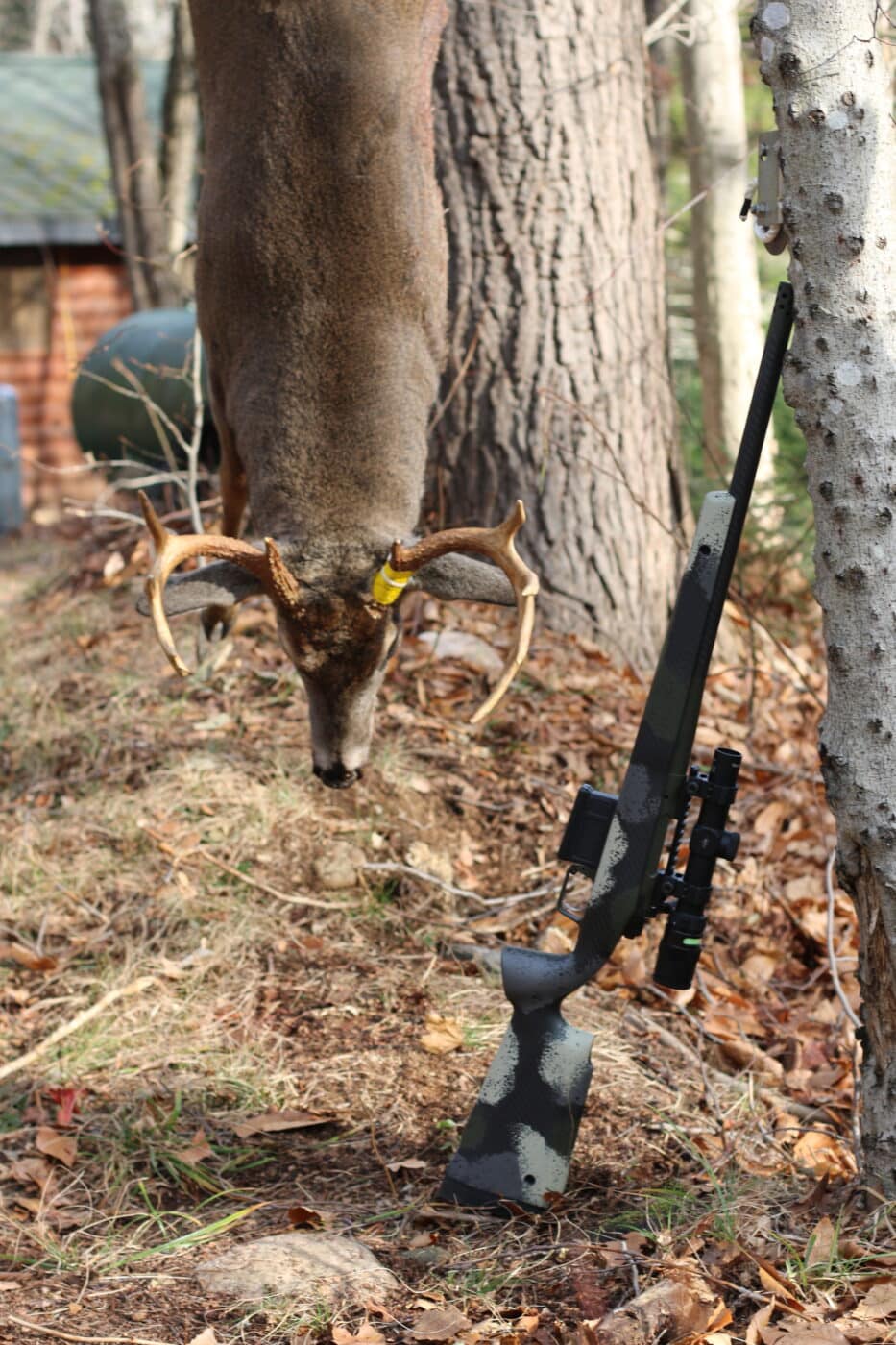What Should You Do When You Jump a Buck?
August 29th, 2022
4 minute read
The buck exploded from under foot like a firecracker, and then zigzagged across the creek and up the wooded hillside in long bounds before disappearing into a thick stand of hemlocks a few short seconds later. The unmistakable noise of his wide rack snapping dead branches suddenly stopped however, as if the buck had either broken into an opening or had stopped dead still in his tracks less than 100 yards away.

I immediately dropped to my knee, and slowly brought my binoculars up to my face. I peered over the top of the housing and stared at the spot I last saw the buck, and then looked through the glass, focusing my eyes inch by inch into the dark timber. Sure enough, the buck had indeed stopped behind a fallen tree and was staring back in my direction. He remained statuesque for several minutes, looked left to right momentarily, turned around and then, with a flick of his tail, faded from sight like a wisp of smoke from a wilderness campfire.
So what should you do? The first thing is to keep the buck in sight for as long as possible, taking note of his body language. If he makes a few short bounds only to stop within sight behind a blow down, he probably does not know exactly what scared him.

Depending on the wind and ground conditions, you may want to try a fawn bleat. Fawns are rambunctious and can cause quite a stir as they scamper about. One or two bleats from your grunt tube will often calm a spooked buck down especially if he only heard you snap a twig, and eventually lure him back for a shot.
The Chase Phase
If you are able to hunt several days in a row as the rut is about to break loose, you may be lucky enough to jump several bucks from one location. At first you might think the buck’s high-tailed it out of the area, but don’t for a second believe it. They are part of a pack of bucks in hot pursuit of a doe near estrous, and you just stepped into the middle of all the commotion.
In these cases several bucks will be zigzagging behind the doe in an effort to keep tabs on her exact whereabouts as she attempts to elude her army of suitors by running in circles and ducking in and out of heaving cover. The closer she is to estrous, the more likely a mature buck will be leading the charge. But if she is still several hours from ovulating, the old buck will be satisfied to remain nearby and let the satellite bucks do the chasing until she is ready to stand and breed. Only then will he move forward to claim the mating rights.
What should you do now? Use your eyes and ears to keep tabs on the doe yourself! Invariably she will be successful in giving some of the bucks the slip. Do not fret however as this can be your golden opportunity to rifle a racked buck. Let me explain.

Once a rutting buck has lost contact with a doe near estrous, he will begin frantically using all his senses to reconnect with her, often throwing caution to the wind as he searches desperately for any sign of her. He might walk boldly across openings with his head erect and his ears cocked in an effort to pick up any sight or sound that might indicate her exact whereabouts such as a snapped twig, the flick of a tail, a rustling of leaves, a sapling swaying back and forth (a buck making a rub?), the clashing of two bucks sparring, a doe bleat or a tending grunt from another buck.
Indeed, his attention will suddenly be riveted to almost any sight or sound that could be interpreted as another deer. He will continue to circle about, periodically dropping his nose to the ground to catch her scent trail, until he either finds her or gives up exhausted.
Early Season
Here is the plan. Give the buck what he is looking for! Get the wind in your favor, and try some light rattling or some mesmerizing vocalizations. My first choice now would be an estrous doe bleat, or a series of estrous bleats followed by a series of moderately toned tending buck grunts.

A buck seeking out a lost hot doe will hopefully interpret your renditions as that doe being seriously courted by another buck. Stomp the ground and shake some brush to add realism to the ruse. And get ready! Any nearby buck may actually charge your position and any shot you get could be eyeball to eyeball! Hence, I suggest a low-power scope setting on the scope on your Model 2020 Waypoint rifle!
Conclusion
As you can see, jumping a buck is not the end of the hunt, but an opportunity to score. And you will, too, if you keep your wits about you, play the wind … and hold your Waypoint 2020 at port arms!
Editor’s Note: Be sure to check out The Armory Life Forum, where you can comment about our daily articles, as well as just talk guns and gear. Click the “Go To Forum Thread” link below to jump in!
Join the Discussion
Continue Reading
Did you enjoy this article?

 58
58






